Monday, 11:00am
27 November 2017
Two tribes
It’s always fun to win awards. But what do two wildly different ceremonies tell us about the state of magazine design, editing and publishing?
By John L. Walters

Last week I attended two magazine awards ceremonies on two successive days. I don’t make a habit of this, but I was involved as a nominee in both the Stack Awards and those run by the BSME, the British Society of Magazine Editors, writes John L. Walters.
As far as we can tell, Eye’s two editorial team members (me and assistant editor Sarah Snaith) were the only people present at both events. The differences were stark. Stack’s ceremony was at the Queen of Hoxton nightclub, a distinct improvement on last year’s crowded event in the cellar of The Book Club, but still on the grungy side, with generous canapés and free drinks all evening for a ticket price of £30.
Queen of Hoxton, Curtain Road and (below), Sheraton Grand London Park Lane hotel.
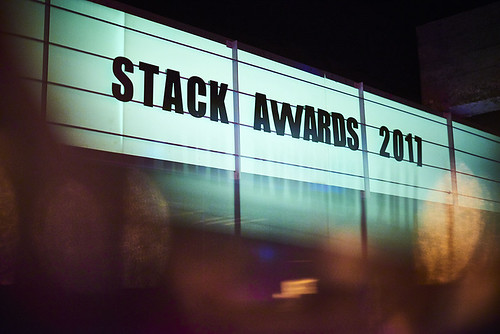
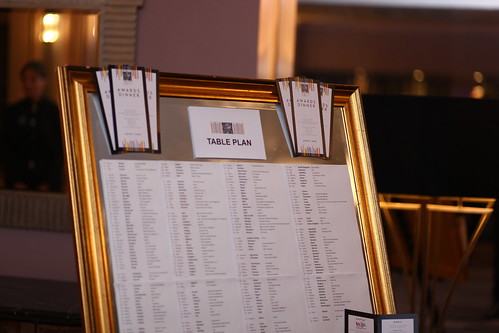
The BSME Awards were held at the beautifully refurbished Art Deco ballroom of the Sheraton Grand in Piccadilly, with a sit-down dinner, celebrity presenter (actor Sally Phillips), musical interlude (Tokio Myers) and Champagne reception. The cost per head ranged from £180 to an eye-watering £490 plus VAT.
There were a few magazines common to both events besides Eye, including Port and The Gentlewoman, but on the whole, the BSME focused on the commercial magazines published by corporations such as Time Inc. (which has just been sold to the Meredith Corporation for $2.8bn), Emap, Bauer and News Corp.
When the BSME began in the 1980s, these companies dominated the media landscape, with many titles selling in the millions. Now, with circulations dropping into the low six figures and below, they are joined by more specialist companies such as Eye to Eye, John Brown Media and River. Membership magazines (such as E&T or Work), or client / customer titles are often represented – Pulp, published by Eye Magazine Ltd., has won prizes in 2015 and 2016. This year’s reorganisation meant that digital titles can enter a majority of categories. [Disclosure: I am a member of the BSME committee and I have frequently taken part in Stack events.]
The Stack Awards, now in their third year, encompass print titles from around the world (including Good Trouble from New York and New Philosopher from Hobart), and its juries were also international, with judges such as Christoph Amend (ZEITmagazin) and Gail Bichler (The New York Times Magazine). The BSME Awards were judged by permutations of committee members.
Left to right: Catherine Westwood, BSME Chair, Helen Hawkins, The Sunday Times Culture and Sally Phillips. Hawkins won Editor of the Year, Music, Arts & Literary.
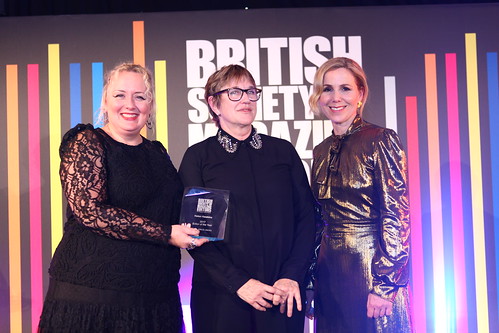
BSME also encompasses newspaper mags such as the Guardian Weekend magazine, The Sunday Times Culture (whose editor Helen Hawkins won a prize this year) and The Times Magazine on Saturday and Fabulous (joint winners). The premium category was won by Condé Nast mainstay GQ, while Alexandra Schulman won ‘Editors’ Editor of the year’, a category decided by members’ votes rather than a jury.
The whole event was an elaborate, glittering occasion, attended by several famous and / or distinguished figures from the mag world: Jane Bruton (who later won the Mark Boxer Award), Gillian De Bono, Hadley Freeman, Mark Frith, Nicola Jeal, Terry Tavner.
In a short comedy routine, Sally Phillips made much of the fearsome power supposedly wielded by editors, and the perception that we are a hard-bitten and cynical lot en masse. Phillips’s slightly edgy style might have seemed more suited to the Queen of Hoxton the night before, but many of the Stack Awards attendees would have been mystified at her portrayal of magazine editors as grouchy cynics. The overwhelming mood of most indie mag events is optimistic and upbeat – often wildly uncritical – but there’s a positive spirit that’s the mark of a largely young, idealistic set of people who are determined to make magazines and celebrate them.
Kirsten Algera of MacGuffin and (below), Park Communication’s magazine rack at the Stack Awards. MacGuffin won trophies for both Art Director and Editor of the Year.
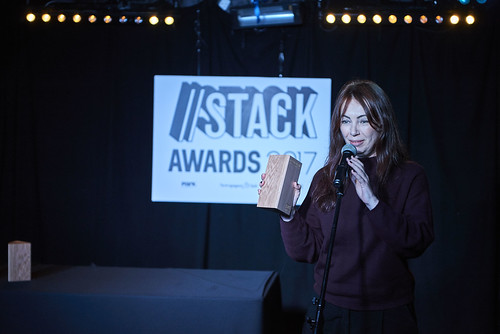

The overriding impression one gets from seeing an array of indie mags (like those on display at the Park Communications stand at the Stack Awards, or on the shelves of Artwords, Athenaeum or MagCulture, whose conference we reviewed), is that of magazines that spring from an obsessive interest in a subject – whether that’s cycling, fashion, sex or food. Eccentric magazines such as MacGuffin, which won Stack awards for both best editor and art director, are unlikely to be launched by publishing behemoths such as Hearst or Haymarket. If the BSME Awards reflect magazines as commerce, the Stack Awards reveal magazines as culture.
Nevertheless, it is worth remembering that acclaimed titles such as The Face (the subject of a new book), Wallpaper and Time Out began their existence as indies, in eras when the cost threshold for making mags was much higher than now. Many of the magazines in the Stack / MagCulture diaspora will have short lives, whether by intention (Dirty Furniture, Works That Work); by running out of steam and / or money; or because they have achieved their purpose – which may be to promote a studio or some other venture. Yet there will be Stack awards participants who look enviously at their counterparts in the BSME, editors, writers and designers who – while negotiating a world of decline – are still better able to afford food, childcare and even mortgages.
Despite some high profile closures and consolidations in the past year, the magazine industry still has the high turnovers and profit margins to reward journalists. The days of high circulations and lavish expense accounts may be distant memories – as the BSME’s chair Catherine Westwood made clear in her opening address – but a glance at the newsstands shows plenty of titles surviving in all sectors of the commercial magazine market.
Bragging rights
When I asked fellow editors what they thought of the awards, they were generally positive. Marcus Fairs, the founder and editor-in-chief of Dezeen, said that the awards he enters most frequently are those of the BSME and AOP [Association of Online Publishers]: ‘It is definitely worth it, since winning has huge benefits for team morale, marketing and bragging rights.’ Micha Weidmann (see Eye 92) was nominated for his design of Dezeen’s website.
Karen Barnes, Food & Drink Editor of the Year for Delicious.
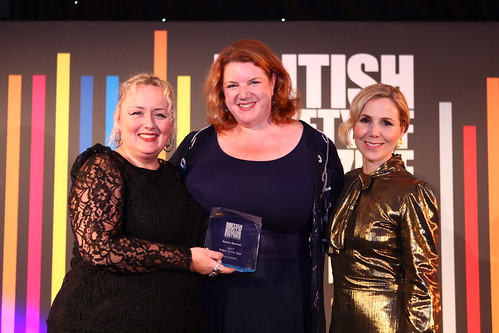
Karen Barnes (a 2017 BSME winner for Delicious. magazine), who regularly enters the Guild of Food Writers, Fortnum & Mason and BSME awards, said: ‘Tickets to the awards dinner have become way too expensive. My MD and publishing director were planning to take a whole table, but backtracked on that when they found out the ticket price. In the end, only the three nominees from Eye to Eye Media attended the ceremony, which was a shame.’
When I asked the Sunday Times’s Helen Hawkins (like Barnes, a 2017 winner) whether she thought the awards were too print-oriented, she replied: ‘I imagine the BSME awards will have to go with the flow and develop more digital prizes, or reward those who have expanded their digital side.’ Fairs observed that ‘the winners’ presentations were full of double-page spreads and covers … it did seem that every single award this year went to a print title.’ He also regretted the absence of indie mags.
Some BSME members would only talk off the record. One editor, faced with a sudden flurry of praise, gifts and emails from senior management, observed drily that ‘nobody gave a toss before Tuesday night!’ but nonetheless enjoyed the acclaim. Others observed that such an elaborate event, with its posh frocks and ‘black tie’ dress code, seemed anachronistic, revealing the BSME’s origins in the era of Madonna and Wall Street.
Champagne reception at the Sheraton Grand and (below) beers at the Queen of Hoxton.


Yet the fundamental aim of the BSME, since its 1980s inception, has been to ‘champion editorial excellence’. Most of the editors I talked to, including Hawkins, Fairs and Barnes, agreed that it achieved this aim. Barnes said that it is ‘beyond brilliant … to get recognition for the magazine beyond the confines of the food world.’
Barnes continued: ‘I did feel the awards [ceremony] started in a very “down-on-print” way, which was a shame because, although the big companies are really struggling, there is a lot of exciting stuff going on in smaller companies, where the people at the top understand the creative process better, understand what makes a great, creative magazine and understand that investing in print is more likely to increase circulation than the current trend to reduce and hub [the practice of working across several titles] teams, and radically reduce paper quality.’
Fairs also took issue with the tenor of the opening speech, which in his view ‘dwelt on problems in the industry’. Why? ‘Firstly because we [Dezeen] have been enjoying fantastic growth and simply don’t recognise this perspective; secondly because having paid a large amount of money to be there, we want to be made to feel good.’
Chris Barker, B2B [business-to-business] Art Director of the Year for Work.
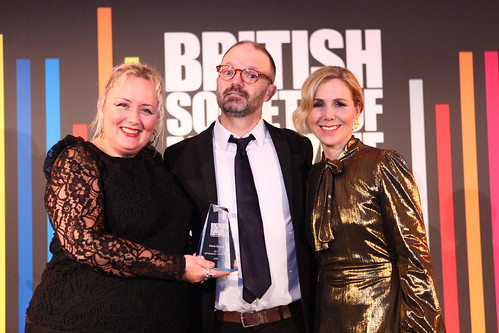
The BSME does have plenty to feel good about. The revised awards categories introduced during Westwood’s time as chair are, in Hawkins’ view, ‘a vast improvement – I wish the other awards would follow suit.’ It may be just a matter of time before a more diverse range of web-only and independent mags enter, when they realise that the BSME doors are open wider than before. Last year there was a whispered suggestion that the BSME should revise its title to ‘the British Society of Media Editors’, keeping the emphasis on editorial quality (and the acronym), but quietly shelving the ‘magazine’ part.
Whatever the medium, there’s a timidity to some areas of publishing that has infected people working for the biggest titles in the mag world, and a layer of management – usually called publishers – that hardly exists in the indie mag world.
Barnes says: ‘Even profitable, successful magazines like Good Housekeeping and Country Living have gone down the route of hubbing teams, with “uber” editors appointed over several titles. In my view it’s misguided. These are heritage brands whose circulations are robust and it is a massive risk. I have a horrible feeling that, in five years’ time, those enduring, wonderful magazines will have declined in circulation and the utterance will be, “This is further proof that print is dying”, whereas it’s the publishing strategy that will have damaged them.’
Crossing the soft borders
Though neither event foregrounds design over written content, both the Stack and BSME awards support my instinct that editorial design is getting better, and more effective across all the sectors, from the most blatantly commercial to the most exquisitely obscure. And it’s often the designers themselves who are most comfortable crossing the soft borders between digital / print and indie / mainstream – look at the work of art directors such as Kuchar Swara, Andrew Diprose, Matt Willey … there are many more. It’s not unusual to see designers from the Sunday Times, Telegraph, Times and Guardian at indie mag events such as Printout, and at Jeremy Leslie’s regular ‘MagCulture meets’ at his shop in Clerkenwell.
Maybe events like these – noting that the BSME organises sessions with Pinterest and Twitter and discusses the use of video as well as printed matter – provide better meeting points than the heightened emotional playground of an awards bash. Many editors and designers are understandably suspicious of awards, as Jason Grant outlined in ‘Awards madness’ in Eye 69. Helen Hawkins said: ‘Like a lot of awards, the BSMEs are still having to compare apples and oranges.’
Steve Watson, founder of Stack and (below) Queen of Hoxton.

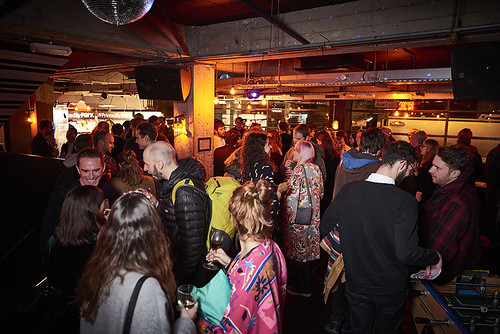
Of course comparing Stack’s awards with the BSME’s is like comparing lychees and bananas. But perhaps we are inching towards a time when the commercial operations will absorb some of the energy and ideas of the indie sector, whether in print or onscreen; and when the independents will take nourishment from the professionalism and journalistic qualities of the mainstream.
Sonny Dhamu, Inside Housing art director, wins B2B cover of the year and (below) Crumble editor Theodore Shack, Student magazine of the year.
All photographs from the BSME Awards taken by Tim Boddy.

All photographs from the Stack Awards taken by Rob Parfitt.

John L. Walters, editor of Eye, London
Eye is the world’s most beautiful and collectable graphic design journal, published quarterly for professional designers, students and anyone interested in critical, informed writing about graphic design and visual culture. It is available from all good design bookshops and online at the Eye shop, where you can buy subscriptions and single issues.
